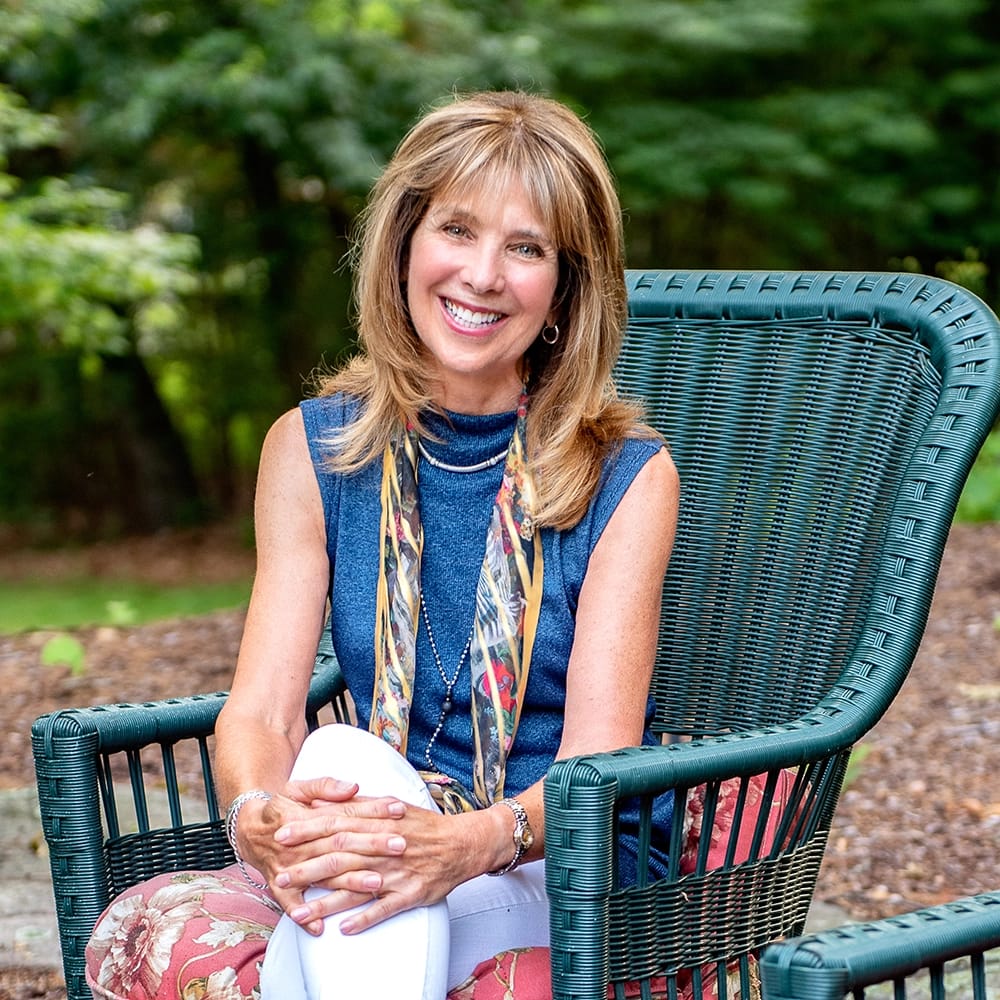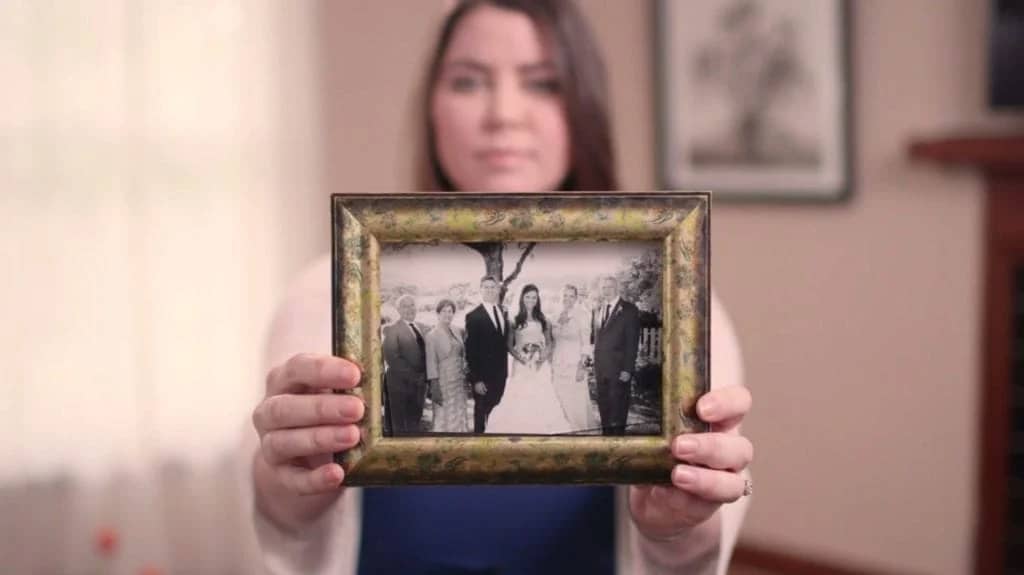
Mariah shared her story in April of 2024.
I still remember the first day I volunteered with hospice, standing outside the doors feeling afraid to go in. I looked up at the sky and thought, “Universe, just show me what there is for me today.” I didn’t know that “today” would open up to become my life’s work.
End-of-life care, as a calling, was sneaking up on me. For a decade and a half, I worked as a director of program development for a national health management company, and then I opened a private practice working directly with clients. Over the years I saw my patients age. I saw them experience losses — parents, grandparents, pets, even children. I saw the grief they experienced. My clinical training had not prepared me for that.
At the same time, I was experiencing grief in my own life: I supported a best friend through her cancer treatment and eventual terminal prognosis. For two years I took her to doctor’s visits, helped her recover from surgery, walked side by side with her through caregiving challenges. In her last year, I began volunteering weekly at a local hospice home to expand my understanding of the complexities of her end-of-life journey. I had no idea that my friend’s experience with cancer was catapulting me into the pursuit of further training and education. It wasn’t long after her passing that my brothers and I made the decision to provide 24-hour care at their home to our 95-year-old mother and father, which we did for two and a half years until their deaths.
Again and again, I was coming face to face with the fact that everyone dies.
By the time my parents passed away, my skills and interest in incorporating end-of-life consultation into my full-time work had grown immensely. I took every workshop I could on grief, end-of-life care, aging-in-place and diagnosis management, and got my end-of-life doula certification.
Today my work is broad-ranging. Sometimes it’s about helping people avoid caregiver’s fatigue. Sometimes I come into a situation, and people are on a boat of hope; no one is talking about the fact that they’re dying. And to come into that when people haven’t had those conversations and yet someone is dying, it’s a very careful walk with my clients to understand where they are and how much suffering I can help alleviate. A lot of people don’t even know what their values or priorities are for the end of life because there’s been no conversation about it. Even choosing your healthcare proxy is not a simple thing. I emphasize to my clients that all of your family or loved ones need to know what your wishes are, that those conversations are multifaceted, and they don’t happen in just one hour. But it’s really taking care of yourself and your loved ones to have them.
I think of one of my clients who had endured an onslaught of treatments for his bile duct cancer, from scorched-earth chemotherapy to the Whipple procedure, and he wanted to do end-of-life planning. We spent a year going through the nuts and bolts of what he wanted the end to look like using some Compassion & Choices resources like the End-of-Life Decisions Guide. Now he’s just fearlessly enjoying life. He even visited several hospices to choose one in advance for himself and ended up volunteering at the hospice. To see him take charge and feel like he has some agency again has been amazing.
Unfortunately, many people don’t know what hospice is or what palliative care provides, and the forces that be aren’t great at making that known. I just had a case where my client, who is dying, had been in and out of the hospital and rehab. Finally a family member said to the doctor, “Is it time to talk about hospice?” The physician replied, “I’m glad you brought that up,” when the option of hospice should have been raised by their healthcare team weeks earlier. That’s a shame, because I’ve seen firsthand the gift of hospice and how it can bring so much relief to both the patient and caregiver, even just the relief of knowing your loved one is clean and fed regularly and has appropriate meals.
Because people often want to die at home, part of my job is also helping my clients understand, logistically, how to plan for and support someone dying at home.
I was called in for a case in December to help a woman who had metastatic breast cancer and had gone through all available treatments. I talked with her and her husband and other family members, learning what their needs were and how I could set them up for the best possible end-of-life experience given the circumstances. This included spending time with this family. Those visits and conversations resulted in changes that made a difference: transitioning this woman from the second to the first floor to make caregiving easier, interviewing multiple hospices to help them pick the right one for them, and talking about what a good death looked like for her. It meant giving the husband a chance to go to the gym and organizing community support for his wife so she could see how loved she was.
As much as this work enlivens me and I have great peace about all aspects of the work I find myself in, I’m very aware of how much people suffer in their last hours, days, weeks or months. It can be like a never-ending tidal wave, protracted death. But for people who have the option of medical aid in dying, it can make their end-of-life journey so much better. I worked with a woman whose loved one used medical aid in dying in another state where it is authorized to end his suffering from brain cancer. Not only did medical aid in dying afford this man a peaceful and love-filled exit from this life, but it also gave his partner a beautiful memory of him in his last days. Without it, her grief would have been so different.
Like so many aspects of end-of-life care, medical aid in dying is an option that people need to know more about. I’ve started hosting regular events I call “Arc of Life Nights” that guide people through conversations about all the stops along the journey toward the end of life. I use Finish Strong, Compassion & Choices Magazine and the End-of-Life Decisions Guide as references. Everyone always says, “This was so fabulous. I was so nervous to come!” When I dedicated one Arc of Life Night to discussing medical aid in dying, people couldn’t get enough of the conversation. They wanted to know what it is, how it works — it was such a thoughtful discussion. That option is precious and one we need here in Massachusetts.
There are many opportunities to guide, problem-solve and simply help people feel better, suffer less and return to some sense of agency in the face of something they never thought about. That’s my job. But we all need to understand the various dimensions involved in a life ending — after all, everyone’s does.

Nothing advances our common cause of improving end-of-life care like real stories. Inspire others and drive change by sharing your story today.
Mail contributions directly to:
Compassion & Choices Gift Processing Center
PO Box 485
Etna, NH 03750